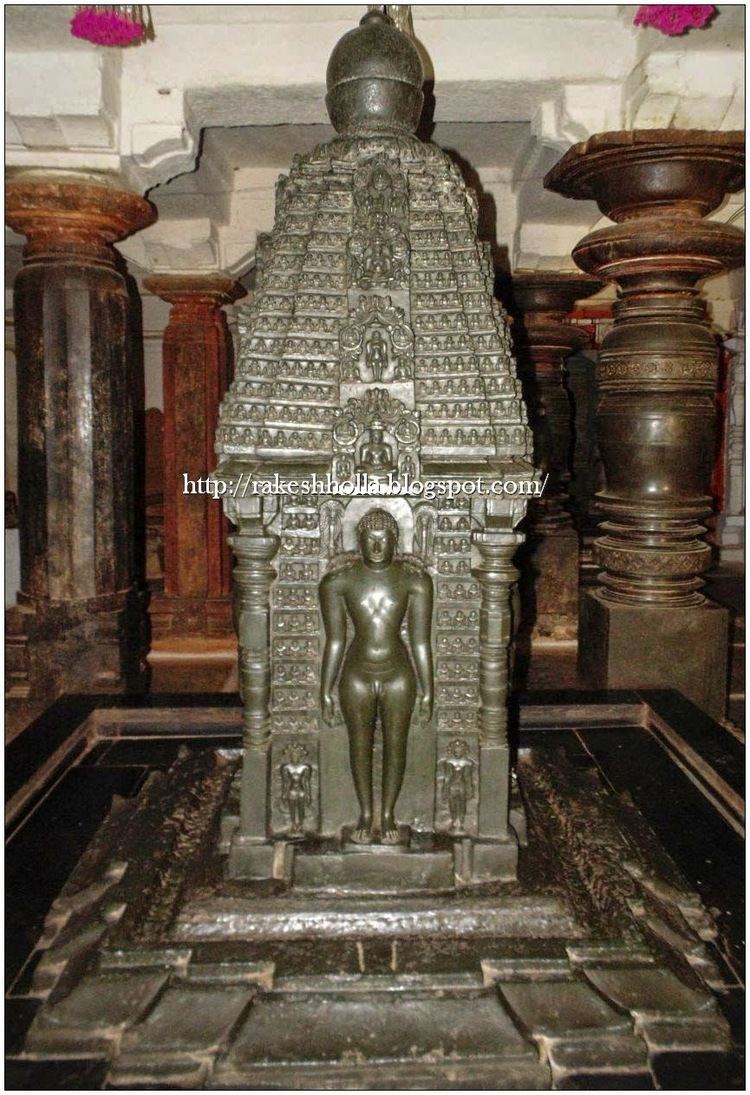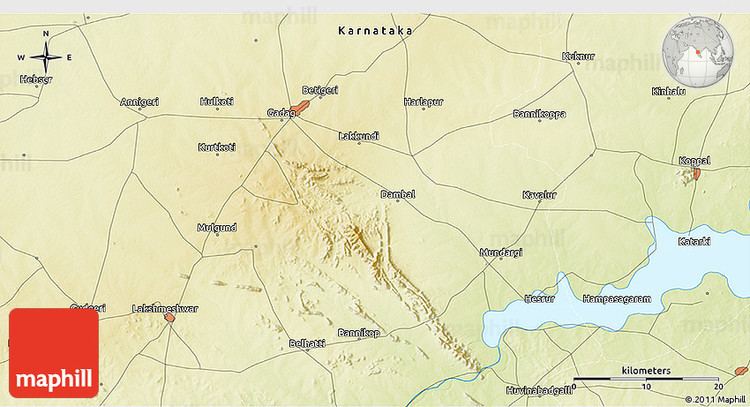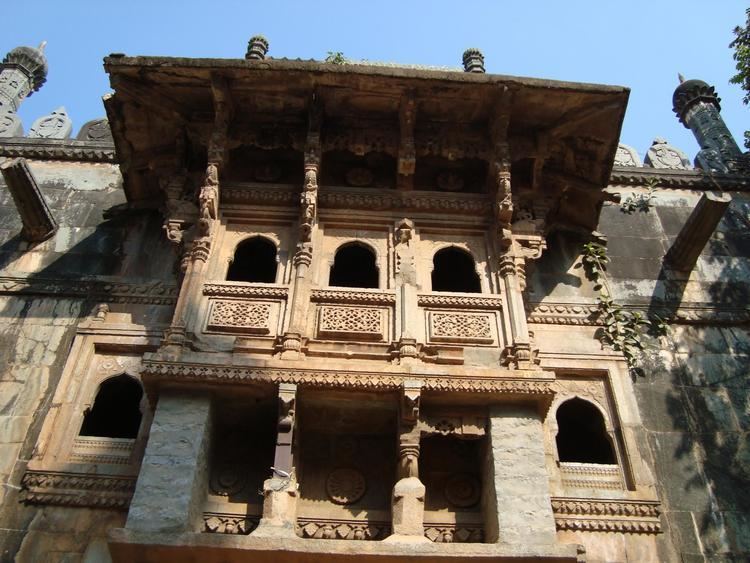Country State | Language spoken District | |
 | ||
Map of Lakshmeshwara
Lakshmeshwara is a town, in Gadag district, in the Indian state of Karnataka. It is about 40 km from Gadag and 55 km from Hubli. Lakshmeshwara is an agricultural trading town.
Contents
- Map of Lakshmeshwara
- Geography
- Demographics
- History
- Someshwara temple complex
- Someshwara temple
- Open well
- Kannada inscriptions
- Jain Basadis
- Shanka Basadi
- Ananthanatha basadi
- Islamic monuments
- Bade Nana Dargah
- Jumma Masjid
- References

There are many important temples in this historic town, including the Shiva temple, the "Someshwara Temple". There are two ancient Jain temples (Sannabasadi and Shankabasadi) in the town, as well as a notable Jamma Masjid. Lakshmeshwara is also home for many smaller shrines, a dargah, the Kodiyellamma temple, the Mukha Basavanna shrine, and a gigantic idol of Suryanarayana.

Lakmeshwar is 52 km from Hubli and 40 km from Gadag. There are direct trains from Bangalore to Lakmeshwar.
Geography
Lakshmeshwar is at 15.13°N 75.47°E / 15.13; 75.47. It has an average elevation of 634 metres (2080 feet).
Demographics
As of 2001 India census, Lakshmeshwar had a population of 33,411. Males constitute 51% of the population and females 49%. Lakshmeshwar has an average literacy rate of 62%, higher than the national average of 59.5%: male literacy is 70%, and female literacy is 53%. In Lakshmeshwar, 13% of the population is under 6 years of age.
History
Lakshmeshwara is famous for prolific culture and literature. It is a place with rich heritage in Karnataka hence it is called as Tirulugannada Nadu. Many kings have patronised the place.
Lakshmeshwar or ancient Huligere or Puligere was the capital of Puligere-300. Puligere means pond of tigers. There are theories of the origin of the name Lakshmeshwara: from King Lakshmanarasa who was ruling Puligere or from the temple called Lakshmi-Lingana gudi, which means the temple of Lakshmi.
Other names include Purigere, Porigere, Purikanagar and Pulikanagar.
Adikavi Pampa wrote his famous poetry in Lakshmeshwara.
Many Jain saints and writers have flourished here. They include Devachakra Bhattaraka, Shankanacharya, Hemadevacharya, Padmasena, Tribhuvana Chandra Padmita and Rama Dvacharya.
Someshwara temple complex
The most important monument at Lakshemshwar is the Someshwara temple complex (11th century). The temple complex with three main entrances is surrounded by high walls look like a fort. It is a splendid specimen of Chalukya architecture.
In middle of the temple complex, there is a Someshwara temple, surrounded by many small temples mainly dedicated to Shiva, along the compound wall, built with granite, some halls in the complex meant for resting devotees.
Someshwara temple
Someshwara temple with the traditional structures of a temple includes a garbha griha, an ardha mantapa or halfway hall, a navaranga and a mukha mantapa or entrance porch.
The Nandi and Shiva Parvati idols in the temple are exquisitely sculpted. These idols are referred to as Saurashtra Someshwara, as these idols were brought by a Shiva devotee from Saurashtra and installed at Lakshmeshwara.
Open well
Inside the Someshwara temple complex, behind the temple, there is an open step-well. This step-well, being richly carved and ornamented, is of architectural and artistic significance.
Kannada inscriptions
At the Someshwara temple complex, there are many Kannada inscription. Over 50 stone inscriptions (records) show the cultural importance.
Jain Basadis
Jainism related to Lakshmeshwara has long history.
Lakshmeshwara is one of the ancient Jain centres. Many Jain temples are mentioned in the inscriptions.
Shanka Basadi
Of the two historical Jinalayaa at Lakshmeswar, the more famous is Sankha Jinalaya, also called Sahasrakuta Jinalaya, in the BastiBana area. This takes back the history of Lakeshmeshwara to the 8th century; though the temple is in Chalukya style it has undergone many modifications and renovations.
Neminath (Shankha is the symbol of Neminath), the 22nd Jain thirthankara, is the presiding deity of this Jain Basadi.
Basadi, which consists of a Garbhagriha, a large Ardhamandapa, larger Mahamandapa and a Rangamandapa.
The other Jinalaya there is a Trikuta dedicated to 'Anantanatha.
Ananthanatha basadi
Another Jain temple at Lakshmeshwara is the Ananthanatha Basadi, built in AD 1250, which is in the middle of the town. This Basadi is an example of the Chalukya style of architecture. The idol of Ananthanatha, one of the 24 Thirthankars, is installed in the sanctum sanctorum of the shrine.
Islamic monuments
The Dargah (mausoleum) of Hazrat Sulaiman Badshah Qadri, also known as the "Doodh Nana Valli" is located in the town. The dargah is known as "Doodh Nana" because it is customary for people to bring milk ("doodh") to perform fateha at this mausoleum. The holy man buried here is Hazrat Sulaiman Badshah Qadri Baba, a descendant of Hazrat Peeran-e-Peer Hazrat Ghouse-e-Azam Dastageer Hazrat Shaik Abdul Qader Gillani Rizwan Allahi Thaalah Alaihi Ajmaeen. This Sufi saint is very famous and even his painting photos are sold in different dargahs all over south India.
Bade Nana Dargah
During Adilshahi rule (Bijapur Sultanate), they built monuments like Masjid, Dargah. They adapted the Indo-Saracenic architectural style.
Hazarath syed Ankushkhan wali(reh) Dargah named after Ankuskhan of Bijapur. The Dargha is about one km from the KSRTC bus stand Lakshmeshwar at manjalapur. (he was nobel saint of aadil shahi period & descendant of gujrati sayed's his dargah also known as syed laal shabaaz bukhari rehmatullah alai),bade nana. It is as old as Jumma Masjid, which is constructed in Indo-Saracenic architecture style. This daragah is managed by direct lenial descendants sayed shah soofisab Al bukhari Al hussaini urf Dr dada pacha baba saheb peerzade and family.
Jumma Masjid
At Lakshmeshwar there is an artistically raised mosque (masjid) of Adilshahi times.
The Jumma Masjid at Lakshmeshwara which dates back to the time of the Adilshahi rule. The mosque was built in 1617 by Ankush Khan. Juma Masjid In the same Street of Dargah Shareef you will find the Juma Masjid, a stone mosque constructed by Syed Ankush Khan in 1617 AD. Even the chains are made of stones. The masjid attracts a large number of tourists and it comes under Archeological Survey of India.
Jumma Masjid is constructed in Indo-Saracenic style. The massive doors of the mosque are like a fort entrance. The mosque has two tall minars and a large semicircular dome. There are Dravidian style chains hanging across the ceiling of the mosque.
